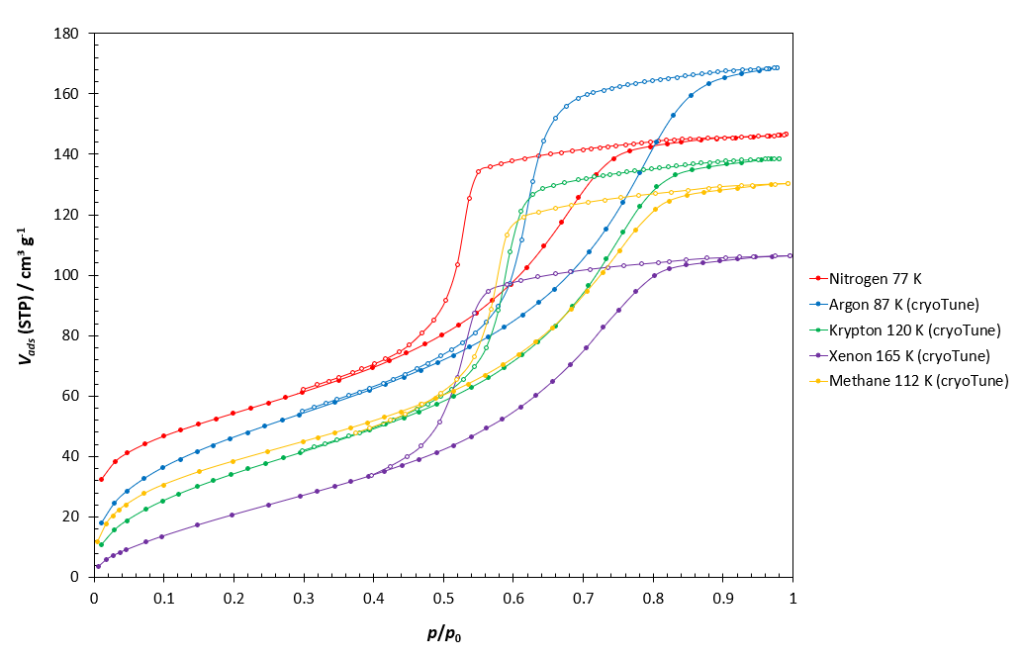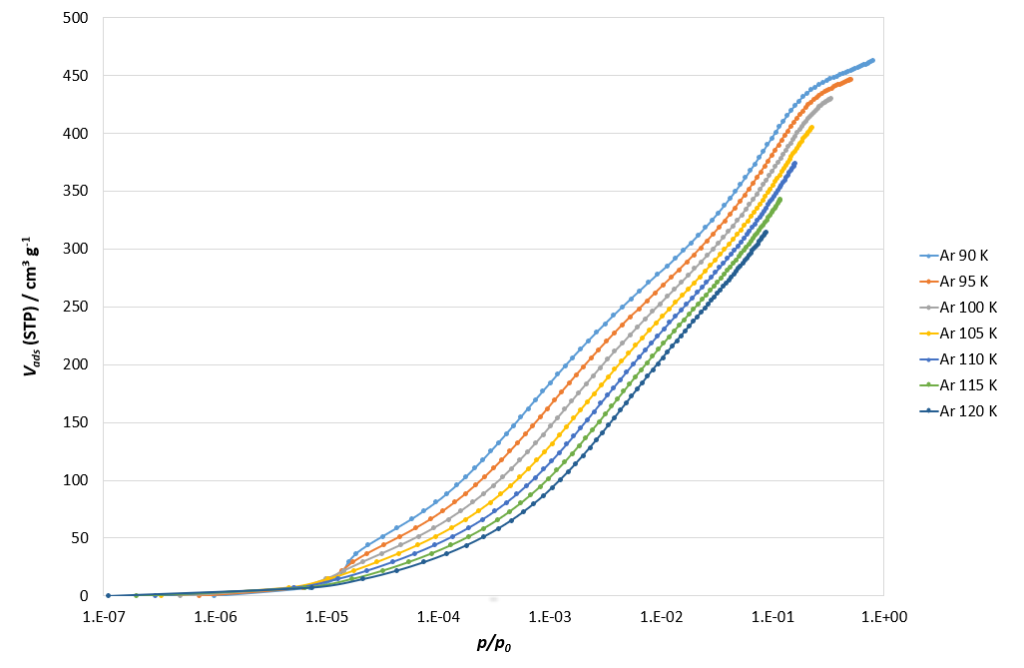Systematic re-evaluation of adsorptives for surface and pore analysis…
…was the topic of our presentation at the annual meeting of the Adsorption Group in Berchtesgaden at the end of February 2020, which was unfortunately the last of 3P presentations at a conference for the time being, as six further 3P presentations at other conferences were cancelled in this six-month period alone. Among others, topics of our 3P talks would have been:
- „Comprehensive powder characterization: influence of microscopic, particulate properties on the macroscopic behavior of bulk solids“
- „Characterization of sorption kinetics of CO2 from N2-rich gas mixtures studied by breakthrough experiments on Zeolites“
- „Systematic reassessment of adsorptives for surface area and pore analysis“
At this point, we would like to share our experience with you in the field of surface and pore analysis, but also for comprehensive particle analysis with particle size distributions, particle shape analysis, the examination of powder heaps by the determination of bulk and tapped densities as well as repose angles and other parameters.
In this news, we are starting with results from the lecture of C. Reichenbach and D. Klank from February 2020. On the basis of the BET evaluation method for surface determination, the “standard nitrogen method at 77 K” used for many years was questioned with our own measurement series. Both the ISO standard 9277 for the determination of specific surfaces and the IUPAC recommendation on gas adsorption of 2015 critically evaluate the use of N2 due to its non-ideal properties of the nitrogen molecule (molecular shape and quadrupole moment). Since good measurement alternatives are now available, many N2-BET results in scientific publications are now questionable. This is illustrated in Figure 1 and Table 1 by examining a mesoporous standard material (BAM P105).

Figure 1: Sorption isotherms of a mesoporous standard material (BAM P105) at the boiling temperatures of the adsorptive
Table 1: Calculated BET surfaces and pore volumes for a mesoporous standard material (BAM P105)
| Adsorptive and measuring temperature | ABET / m² g-1 | VP / cm³ g-1 |
| Nitrogen 77 K | 200 | 0.23 |
| Argon 87 K | 150 | 0.22 |
| Krypton 120 K | 140 | 0.22 |
| Xenon 165 K | 120 | 0.21 |
| Methane 112 K | 150 | 0.22 |
Table 1 shows well-matched pore volumes, while the BET surface area determined with N2 at 77 K is more than 30% higher than the other BET surfaces. The assumption of the liquid densities for the adsorbate phase present in the pores leads to conclusive values for the pore volumes. On the other hand, the clear differences in the N2– compared to the other BET surfaces can be attributed to specific interactions in the formation of the monolayer (first layer on the solid surface). But who can explain that although all non-polar “small” adsorptives with spherical shape (Ar, Kr, CH4) result in a BET surface area of approx. 150 m2/g, the ellipsoid N2 molecule with quadrupole moment of all molecules is supposed to lead to the “allegedly correct specific surface values”?
A “smart guy” recently replied to a similar question with a business-economic joke like this: “…we will not switch to another adsorptive which leads to smaller BET surfaces for our industrial product!” But he is not supposed to do so, because the N2 77 K method is good enough for a comparison of results from different laboratories, i.e.: quality control of starting materials, intermediate and end products is still possible. But unlike comparative measurements in quality control, in science it is all about “accuracy”. In many a scientific field one would shake one’s head at 30% avoidable error…
Conclusion: Argon is the adsorptive for the comprehensive texture analysis of porous and finely dispersed solids par excellence:
- Micropore analysis
- Specific surface
- Pore width distribution
- Total pore volume
- Measurements at 87 K now also possible without liquid argon (e.g. with the cryoTune option for common gas sorption instruments, see also Figure 2b)
And soon you will read here at 3P Instruments how such argon isotherms from Figure 2a can be used to obtain even more information about the surface and pore properties of materials.

Figure 2a: Argon isotherms in the temperature range 85 – 120 K for the investigation of the surface and pore properties of a spherical activated carbon

Figure 2b:The tempering of the argon measurements was done with the 3P option cryoTune 87
In the meantime, 3P Instruments has installed cryoTunes in adsorption devices of different manufacturers. On request, we would be pleased to check if this is also possible for your sorption device with the corresponding software version. Please feel free to contact us at info@3P-instruments.com or call us: + 49 8134 9324 0
Do you like our News?
Follow us:
 Deutsch
Deutsch English
English